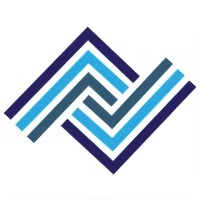
Atomic Energy Organization of Iran (AEOI) Company Cyber Security Posture
aeoi.org.irIn the middle of 1950s decade, the University of Tehran initiated the first order for purchasing the equipment needed for nuclear research and educational activities from abroad. One year later, the nuclear center of the University of Tehran was established and through the operation of the Tehran five megawatt research reactor in 1967, the foundation of Iran’s nuclear science and technology was laid down. With the establishment of the Atomic Energy Organization of Iran in 1974, and the subsequent transfer of Tehran university atomic center to this organ, the mission and functions related to the nuclear technology development, particularly regarding electricity production in the country was allocated to this organization. Article one (1) of the Atomic Energy Organization founding law (statute), approved in 1974, states the main purpose of its establishment, as to utilize radiation and nuclear energy in industries, agriculture and services to establish nuclear power plant and desalination facilities to convert salt water, production of raw material required for nuclear industries,establish needed scientific, technological infrastructure for implementation of above projects as well as coordination and monitoring over all matters related to the country’s nuclear energy. Detailed description of the above activities in stated in article 3 of the organization’s laws. In the years remaining up to the victory of the Islamic revolution (around 4 years), the agenda of the organization aimed at the establishment of a 20000 Megawatt nuclear power plant for production of electricity. Based on this objective, numerous contracts were signed for the establishment of power plants and consequent access to nuclear fuel.
AEOI( Company Details
aeoi
168 employees
529
922
Government Administration
aeoi.org.ir
Scan still pending
ATO_9046064
In-progress
Between 900 and 1000
This score is AI-generated and less favored by cyber insurers, who prefer the TPRM score.
 AEOI( Global Score
AEOI( Global Score.png)

Atomic Energy Organization of Iran (AEOI) Company Scoring based on AI Models
| Model Name | Date | Description | Current Score Difference | Score |
|---|---|---|---|---|
| AVERAGE-Industry | 03-12-2025 | This score represents the average cybersecurity rating of companies already scanned within the same industry. It provides a benchmark to compare an individual company's security posture against its industry peers. | N/A | Between 900 and 1000 |
Atomic Energy Organization of Iran (AEOI) Company Cyber Security News & History
| Entity | Type | Severity | Impact | Seen | Url ID | Details | View |
|---|---|---|---|---|---|---|---|
| Atomic Energy Organization of Iran (AEOI) | Cyber Attack | 100 | 9 | 10/2022 | ATO0821122 | Link | |
Rankiteo Explanation : Attack that could bring to a warDescription: One of the subsidiaries' email servers of the Iranian Atomic Energy Organization (AEOI) was hacked after which the Black Reward hacking group published stolen data online. An unauthorized party stole emails from the hacked server, which consisted of daily correspondence and technical memos. However, the agency immediately took the necessary preventive measures to mitigate the results of this incident and informed all concerned parties and officials. | |||||||
Atomic Energy Organization of Iran (AEOI) Company Subsidiaries

In the middle of 1950s decade, the University of Tehran initiated the first order for purchasing the equipment needed for nuclear research and educational activities from abroad. One year later, the nuclear center of the University of Tehran was established and through the operation of the Tehran five megawatt research reactor in 1967, the foundation of Iran’s nuclear science and technology was laid down. With the establishment of the Atomic Energy Organization of Iran in 1974, and the subsequent transfer of Tehran university atomic center to this organ, the mission and functions related to the nuclear technology development, particularly regarding electricity production in the country was allocated to this organization. Article one (1) of the Atomic Energy Organization founding law (statute), approved in 1974, states the main purpose of its establishment, as to utilize radiation and nuclear energy in industries, agriculture and services to establish nuclear power plant and desalination facilities to convert salt water, production of raw material required for nuclear industries,establish needed scientific, technological infrastructure for implementation of above projects as well as coordination and monitoring over all matters related to the country’s nuclear energy. Detailed description of the above activities in stated in article 3 of the organization’s laws. In the years remaining up to the victory of the Islamic revolution (around 4 years), the agenda of the organization aimed at the establishment of a 20000 Megawatt nuclear power plant for production of electricity. Based on this objective, numerous contracts were signed for the establishment of power plants and consequent access to nuclear fuel.
Access Data Using Our API

Get company history
.png)
AEOI( Cyber Security News
Russia to build eight nuclear plants in Iran: Atomic chief
Iranian atomic chief has announced that Russia will construct eight nuclear power plants in Iran under a previously signed contract between ...
Iran's atomic energy organization says e-mail was hacked
Iranian hacking group Black Reward said it released hacked information and declared support for protesters.
Iran says ‘specific foreign country’ behind hacktivist leak of atomic energy emails
Iran's Atomic Energy Organization (AEOI) said on Sunday that “a specific foreign country” which it did not name was behind the hacking of an email server a ...
How to reduce the risk of a catastrophic spent nuclear fuel fire near the Persian Gulf
How to reduce the risk of a catastrophic spent nuclear fuel fire near the Persian Gulf ... By Tara Burchmore, Tom Spence, Ali Ahmad | October 6, 2021.
Was it Stuxnet 2.0? Cyberattack on Iran’s Natanz Nuclear Facility
Reports suggest that this was a sabotage attempt by state actors initiated through a cyberattack on Iran's nuclear facility.
Verification and Monitoring in Iran
Monitoring and verification in Iran by IAEA nuclear inspectors includes inspection activities, reports, statements and media coverage on IAEA safeguards ...
Iran’s atomic energy agency confirms hack after stolen data leaked online
The leaked data includes alleged passports and visas of Iranian and Russians working with the agency, power plant status and performance reports ...
Iran Says Nuclear Facility Fire May Have Been Cyber-Sabotage
Iranian officials have said a fire at the country's Natanz nuclear facility late last week may have been caused by a cyber-attack.

AEOI( Similar Companies

Government of Alberta
Work with the Alberta government to build a stronger province for current and future generations. We offer diverse and rewarding employment opportunities in an environment that encourages continuous learning and career growth. We are one of the largest employers in Alberta with over 27,000 empl

Salford City Council
Salford City Council exists to serve its residents and provides a complete and comprehensive range of services and facilities. The council's mission statement is "to create the best possible quality of life for the people of Salford." Salford is a city constantly changing and moving into an exciti

Polícia Civil de Minas Gerais (PCMG)
Apuração de crimes e contravenções, por meio da investigação criminal cientificamente aplicada, e o exercício da polícia judiciária para o esclarecimento de autoria, materialidade, motivo e circunstância, bem como a identificação civil e criminal, o registro e licenciamento de veículos,

Ministry of Environment and Urbanism
MINISTRY of ENVIRONMENT and URBANISM (MEU) MAIN SERVICE UNITS ================== 1) General Directorate of Construction Works 2) General Directorate of Spatial Planning 3) General Directorate of Environmental Management 4) General Directorate of EIA, Permits and Control 5) General Directo

West Virginia Division of Personnel
Our mission is to provide personnel management programs to support State agencies in employing and retaining individuals of the highest ability and integrity to provide efficient and effective governmental services for the citizens of West Virginia. We help the state workforce serve the people of We

Egypt
Egypt is a transcontinental country spanning the northeast corner of Africa and the southwest corner of Asia via a land bridge formed by the Sinai Peninsula. It is the world's only contiguous Eurafrasian nation. Egypt is bordered by the Mediterranean Sea to the north, Palestine, and Israel to the no

Frequently Asked Questions (FAQ) on Cybersecurity Incidents
AEOI( CyberSecurity History Information
Total Incidents: According to Rankiteo, AEOI( has faced 1 incidents in the past.
Incident Types: The types of cybersecurity incidents that have occurred include ['Cyber Attack'].
Total Financial Loss: The total financial loss from these incidents is estimated to be {total_financial_loss}.
Cybersecurity Posture: The company's overall cybersecurity posture is described as In the middle of 1950s decade, the University of Tehran initiated the first order for purchasing the equipment needed for nuclear research and educational activities from abroad. One year later, the nuclear center of the University of Tehran was established and through the operation of the Tehran five megawatt research reactor in 1967, the foundation of Iran’s nuclear science and technology was laid down. With the establishment of the Atomic Energy Organization of Iran in 1974, and the subsequent transfer of Tehran university atomic center to this organ, the mission and functions related to the nuclear technology development, particularly regarding electricity production in the country was allocated to this organization. Article one (1) of the Atomic Energy Organization founding law (statute), approved in 1974, states the main purpose of its establishment, as to utilize radiation and nuclear energy in industries, agriculture and services to establish nuclear power plant and desalination facilities to convert salt water, production of raw material required for nuclear industries,establish needed scientific, technological infrastructure for implementation of above projects as well as coordination and monitoring over all matters related to the country’s nuclear energy. Detailed description of the above activities in stated in article 3 of the organization’s laws. In the years remaining up to the victory of the Islamic revolution (around 4 years), the agenda of the organization aimed at the establishment of a 20000 Megawatt nuclear power plant for production of electricity. Based on this objective, numerous contracts were signed for the establishment of power plants and consequent access to nuclear fuel..
Detection and Response: The company detects and responds to cybersecurity incidents through {description_of_detection_and_response_process}.
Incident Details
Incident 1: Ransomware Attack
Title: {Incident_Title}
Description: {Brief_description_of_the_incident}
Date Detected: {Detection_Date}
Date Publicly Disclosed: {Disclosure_Date}
Date Resolved: {Resolution_Date}
Type: {Type_of_Attack}
Attack Vector: {Attack_Vector}
Vulnerability Exploited: {Vulnerability}
Threat Actor: {Threat_Actor}
Motivation: {Motivation}
Incident 2: Data Breach
Title: {Incident_Title}
Description: {Brief_description_of_the_incident}
Date Detected: {Detection_Date}
Date Publicly Disclosed: {Disclosure_Date}
Date Resolved: {Resolution_Date}
Type: {Type_of_Attack}
Attack Vector: {Attack_Vector}
Vulnerability Exploited: {Vulnerability}
Threat Actor: {Threat_Actor}
Motivation: {Motivation}
Common Attack Types: As of now, the company has not encountered any reported incidents involving common cyberattacks.
Identification of Attack Vectors: The company identifies the attack vectors used in incidents through {description_of_identification_process}.
Impact of the Incidents
Incident 1: Ransomware Attack
Financial Loss: {Financial_Loss}
Data Compromised: {Data_Compromised}
Systems Affected: {Systems_Affected}
Downtime: {Downtime}
Operational Impact: {Operational_Impact}
Conversion Rate Impact: {Conversion_Rate_Impact}
Revenue Loss: {Revenue_Loss}
Customer Complaints: {Customer_Complaints}
Brand Reputation Impact: {Brand_Reputation_Impact}
Legal Liabilities: {Legal_Liabilities}
Identity Theft Risk: {Identity_Theft_Risk}
Payment Information Risk: {Payment_Information_Risk}
Incident 2: Data Breach
Financial Loss: {Financial_Loss}
Data Compromised: {Data_Compromised}
Systems Affected: {Systems_Affected}
Downtime: {Downtime}
Operational Impact: {Operational_Impact}
Conversion Rate Impact: {Conversion_Rate_Impact}
Revenue Loss: {Revenue_Loss}
Customer Complaints: {Customer_Complaints}
Brand Reputation Impact: {Brand_Reputation_Impact}
Legal Liabilities: {Legal_Liabilities}
Identity Theft Risk: {Identity_Theft_Risk}
Payment Information Risk: {Payment_Information_Risk}
Average Financial Loss: The average financial loss per incident is {average_financial_loss}.
Commonly Compromised Data Types: The types of data most commonly compromised in incidents are {list_of_commonly_compromised_data_types}.
Incident 1: Ransomware Attack
Entity Name: {Entity_Name}
Entity Type: {Entity_Type}
Industry: {Industry}
Location: {Location}
Size: {Size}
Customers Affected: {Customers_Affected}
Incident 2: Data Breach
Entity Name: {Entity_Name}
Entity Type: {Entity_Type}
Industry: {Industry}
Location: {Location}
Size: {Size}
Customers Affected: {Customers_Affected}
Response to the Incidents
Incident 1: Ransomware Attack
Incident Response Plan Activated: {Yes/No}
Third Party Assistance: {Yes/No}
Law Enforcement Notified: {Yes/No}
Containment Measures: {Containment_Measures}
Remediation Measures: {Remediation_Measures}
Recovery Measures: {Recovery_Measures}
Communication Strategy: {Communication_Strategy}
Adaptive Behavioral WAF: {Adaptive_Behavioral_WAF}
On-Demand Scrubbing Services: {On_Demand_Scrubbing_Services}
Network Segmentation: {Network_Segmentation}
Enhanced Monitoring: {Enhanced_Monitoring}
Incident 2: Data Breach
Incident Response Plan Activated: {Yes/No}
Third Party Assistance: {Yes/No}
Law Enforcement Notified: {Yes/No}
Containment Measures: {Containment_Measures}
Remediation Measures: {Remediation_Measures}
Recovery Measures: {Recovery_Measures}
Communication Strategy: {Communication_Strategy}
Adaptive Behavioral WAF: {Adaptive_Behavioral_WAF}
On-Demand Scrubbing Services: {On_Demand_Scrubbing_Services}
Network Segmentation: {Network_Segmentation}
Enhanced Monitoring: {Enhanced_Monitoring}
Incident Response Plan: The company's incident response plan is described as {description_of_incident_response_plan}.
Third-Party Assistance: The company involves third-party assistance in incident response through {description_of_third_party_involvement}.
Data Breach Information
Incident 2: Data Breach
Type of Data Compromised: {Type_of_Data}
Number of Records Exposed: {Number_of_Records}
Sensitivity of Data: {Sensitivity_of_Data}
Data Exfiltration: {Yes/No}
Data Encryption: {Yes/No}
File Types Exposed: {File_Types}
Personally Identifiable Information: {Yes/No}
Prevention of Data Exfiltration: The company takes the following measures to prevent data exfiltration: {description_of_prevention_measures}.
Handling of PII Incidents: The company handles incidents involving personally identifiable information (PII) through {description_of_handling_process}.
Ransomware Information
Incident 1: Ransomware Attack
Ransom Demanded: {Ransom_Amount}
Ransom Paid: {Ransom_Paid}
Ransomware Strain: {Ransomware_Strain}
Data Encryption: {Yes/No}
Data Exfiltration: {Yes/No}
Ransom Payment Policy: The company's policy on paying ransoms in ransomware incidents is described as {description_of_ransom_payment_policy}.
Data Recovery from Ransomware: The company recovers data encrypted by ransomware through {description_of_data_recovery_process}.
Regulatory Compliance
Incident 1: Ransomware Attack
Regulations Violated: {Regulations_Violated}
Fines Imposed: {Fines_Imposed}
Legal Actions: {Legal_Actions}
Regulatory Notifications: {Regulatory_Notifications}
Incident 2: Data Breach
Regulations Violated: {Regulations_Violated}
Fines Imposed: {Fines_Imposed}
Legal Actions: {Legal_Actions}
Regulatory Notifications: {Regulatory_Notifications}
Regulatory Frameworks: The company complies with the following regulatory frameworks regarding cybersecurity: {list_of_regulatory_frameworks}.
Ensuring Regulatory Compliance: The company ensures compliance with regulatory requirements through {description_of_compliance_measures}.
Lessons Learned and Recommendations
Incident 1: Ransomware Attack
Lessons Learned: {Lessons_Learned}
Incident 2: Data Breach
Lessons Learned: {Lessons_Learned}
Incident 1: Ransomware Attack
Recommendations: {Recommendations}
Incident 2: Data Breach
Recommendations: {Recommendations}
Key Lessons Learned: The key lessons learned from past incidents are {list_of_key_lessons_learned}.
Implemented Recommendations: The company has implemented the following recommendations to improve cybersecurity: {list_of_implemented_recommendations}.
References
Additional Resources: Stakeholders can find additional resources on cybersecurity best practices at {list_of_additional_resources}.
Investigation Status
Incident 1: Ransomware Attack
Investigation Status: {Investigation_Status}
Incident 2: Data Breach
Investigation Status: {Investigation_Status}
Communication of Investigation Status: The company communicates the status of incident investigations to stakeholders through {description_of_communication_process}.
Stakeholder and Customer Advisories
Incident 1: Ransomware Attack
Stakeholder Advisories: {Stakeholder_Advisories}
Customer Advisories: {Customer_Advisories}
Incident 2: Data Breach
Stakeholder Advisories: {Stakeholder_Advisories}
Customer Advisories: {Customer_Advisories}
Advisories Provided: The company provides the following advisories to stakeholders and customers following an incident: {description_of_advisories_provided}.
Initial Access Broker
Incident 1: Ransomware Attack
Entry Point: {Entry_Point}
Reconnaissance Period: {Reconnaissance_Period}
Backdoors Established: {Backdoors_Established}
High Value Targets: {High_Value_Targets}
Data Sold on Dark Web: {Yes/No}
Incident 2: Data Breach
Entry Point: {Entry_Point}
Reconnaissance Period: {Reconnaissance_Period}
Backdoors Established: {Backdoors_Established}
High Value Targets: {High_Value_Targets}
Data Sold on Dark Web: {Yes/No}
Monitoring and Mitigation of Initial Access Brokers: The company monitors and mitigates the activities of initial access brokers through {description_of_monitoring_and_mitigation_measures}.
Post-Incident Analysis
Incident 1: Ransomware Attack
Root Causes: {Root_Causes}
Corrective Actions: {Corrective_Actions}
Incident 2: Data Breach
Root Causes: {Root_Causes}
Corrective Actions: {Corrective_Actions}
Post-Incident Analysis Process: The company's process for conducting post-incident analysis is described as {description_of_post_incident_analysis_process}.
Corrective Actions Taken: The company has taken the following corrective actions based on post-incident analysis: {list_of_corrective_actions_taken}.
Additional Questions
General Information
Ransom Payment History: The company has {paid/not_paid} ransoms in the past.
Last Ransom Demanded: The amount of the last ransom demanded was {last_ransom_amount}.
Last Attacking Group: The attacking group in the last incident was {last_attacking_group}.
Incident Details
Most Recent Incident Detected: The most recent incident detected was on {most_recent_incident_detected_date}.
Most Recent Incident Publicly Disclosed: The most recent incident publicly disclosed was on {most_recent_incident_publicly_disclosed_date}.
Most Recent Incident Resolved: The most recent incident resolved was on {most_recent_incident_resolved_date}.
Impact of the Incidents
Highest Financial Loss: The highest financial loss from an incident was {highest_financial_loss}.
Most Significant Data Compromised: The most significant data compromised in an incident was {most_significant_data_compromised}.
Most Significant System Affected: The most significant system affected in an incident was {most_significant_system_affected}.
Response to the Incidents
Third-Party Assistance in Most Recent Incident: The third-party assistance involved in the most recent incident was {third_party_assistance_in_most_recent_incident}.
Containment Measures in Most Recent Incident: The containment measures taken in the most recent incident were {containment_measures_in_most_recent_incident}.
Data Breach Information
Most Sensitive Data Compromised: The most sensitive data compromised in a breach was {most_sensitive_data_compromised}.
Number of Records Exposed: The number of records exposed in the most significant breach was {number_of_records_exposed}.
Ransomware Information
Highest Ransom Demanded: The highest ransom demanded in a ransomware incident was {highest_ransom_demanded}.
Highest Ransom Paid: The highest ransom paid in a ransomware incident was {highest_ransom_paid}.
Regulatory Compliance
Highest Fine Imposed: The highest fine imposed for a regulatory violation was {highest_fine_imposed}.
Most Significant Legal Action: The most significant legal action taken for a regulatory violation was {most_significant_legal_action}.
Lessons Learned and Recommendations
Most Significant Lesson Learned: The most significant lesson learned from past incidents was {most_significant_lesson_learned}.
Most Significant Recommendation Implemented: The most significant recommendation implemented to improve cybersecurity was {most_significant_recommendation_implemented}.
References
Most Recent Source: The most recent source of information about an incident is {most_recent_source}.
Most Recent URL for Additional Resources: The most recent URL for additional resources on cybersecurity best practices is {most_recent_url}.
Investigation Status
Current Status of Most Recent Investigation: The current status of the most recent investigation is {current_status_of_most_recent_investigation}.
Stakeholder and Customer Advisories
Most Recent Stakeholder Advisory: The most recent stakeholder advisory issued was {most_recent_stakeholder_advisory}.
Most Recent Customer Advisory: The most recent customer advisory issued was {most_recent_customer_advisory}.
Initial Access Broker
Most Recent Entry Point: The most recent entry point used by an initial access broker was {most_recent_entry_point}.
Most Recent Reconnaissance Period: The most recent reconnaissance period for an incident was {most_recent_reconnaissance_period}.
Post-Incident Analysis
Most Significant Root Cause: The most significant root cause identified in post-incident analysis was {most_significant_root_cause}.
Most Significant Corrective Action: The most significant corrective action taken based on post-incident analysis was {most_significant_corrective_action}.
What Do We Measure?
















Every week, Rankiteo analyzes billions of signals to give organizations a sharper, faster view of emerging risks. With deeper, more actionable intelligence at their fingertips, security teams can outpace threat actors, respond instantly to Zero-Day attacks, and dramatically shrink their risk exposure window.
These are some of the factors we use to calculate the overall score:
Identify exposed access points, detect misconfigured SSL certificates, and uncover vulnerabilities across the network infrastructure.
Gain visibility into the software components used within an organization to detect vulnerabilities, manage risk, and ensure supply chain security.
Monitor and manage all IT assets and their configurations to ensure accurate, real-time visibility across the company's technology environment.
Leverage real-time insights on active threats, malware campaigns, and emerging vulnerabilities to proactively defend against evolving cyberattacks.




